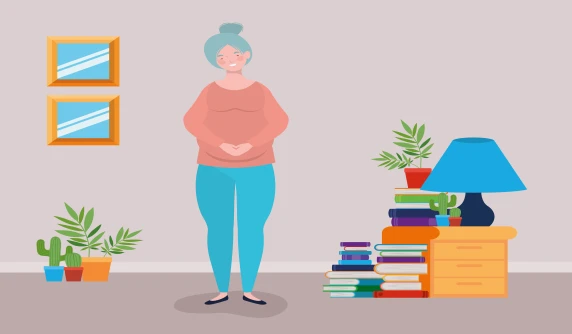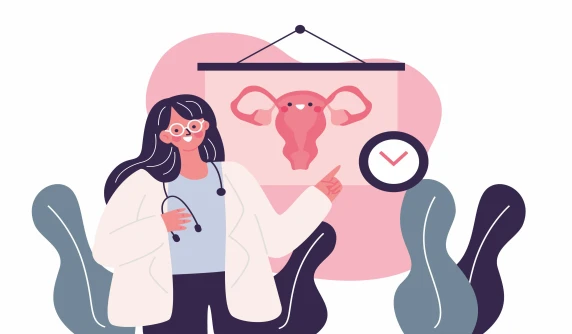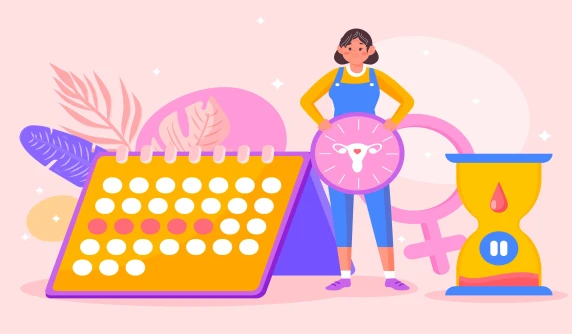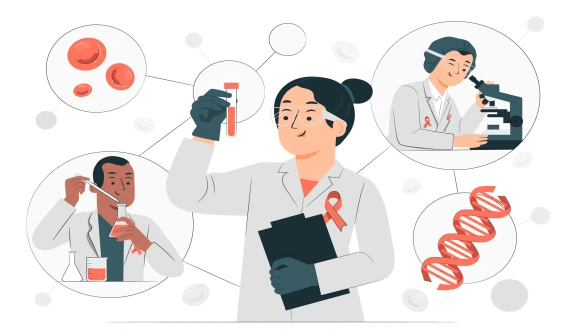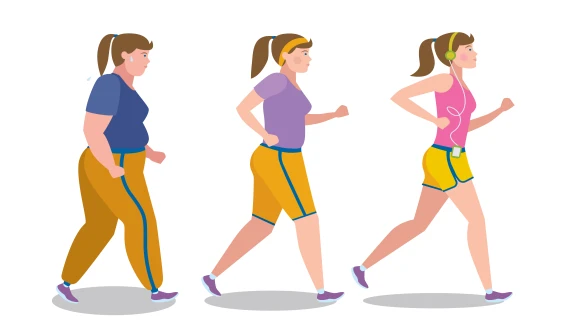
Being a mother is an incredibly transformational experience that is full of love, happiness, and priceless memories. Nonetheless, the urge to lose postpartum belly fat can sometimes accompany the physical changes that pregnancy brings about for a woman.
The quest to reduce belly fat after pregnancy is often for new moms who want to feel better about themselves on the inside as well as improve their physical appearance.
The purpose of this page is to help those who are unsure of how to maintain a flat tummy after pregnancy by offering advice, suggestions, and techniques.
We recognize that the demands of motherhood might make it difficult to prioritize your health and fitness, but it's critical to keep in mind that caring for yourself will help your child as well as you.
We will examine the complexities of weight reduction following pregnancy and then dive into doable strategies to assist you safely and successfully accomplish your objectives.
Our goal is to enable new moms to lose postpartum belly fat in a way that promotes their general health and happiness, from diet ary decisions to focused activity and stress management.
This journey is about embracing the amazing adventure of motherhood with confidence, vigor, and a sense of empowerment—it's not only about regaining your physical well-being.
Together, let's take this journey to appreciate the beauty of the post-pregnancy body and strive toward a happier, healthier you.
Understanding After Pregnancy Belly Fat: Causes and Concerns
Many new mothers worry about having belly fat after pregnancy. It's critical to realize that this is a normal occurrence and not reason for concern.
During pregnancy, the body undergoes several substantial changes, such as weight gain and the stretching of the abdominal muscles. It requires time for the body to revert to its pre-pregnancy state following delivery. The rate and scope of this process, however, can be affected by a number of variables.
First off, the quantity of belly fat that persists after pregnancy can vary depending on the weight gained during pregnancy. It could be more difficult for women to shed the extra belly fat if they gain more weight than is advised.
Secondly, heredity and age also come into play. Those who are older or have a family history of obesity may find it more difficult to shed postpartum abdominal fat. Finally, lifestyle choices like nutrition and exercise can have a big impact on the procedure.
Consuming a balanced diet and engaging in regular exercise can accelerate the reduction of visceral fat.
It's critical to handle abdominal fat gained after pregnancy from a healthy perspective. Here are some actions to think about:
-
Patience: Recognize that the body needs time to heal following pregnancy and childbirth. It's not reasonable or healthful to anticipate getting back to your pre-pregnancy weight right away.
-
Healthy Eating: A balanced diet , especially if you're breastfeeding, can help you lose weight more quickly while still giving you and your child the nutrition you need.
-
Physical Activity: Once your physician provides the all-clear, start including regular exercise in your daily regimen. You can develop your abdominal muscles and burn calories by doing this.
The Significance of Diet in Losing Belly Fat After Pregnancy
It's critical to realize that diet has a big impact on how much weight you lose after pregnancy. Eating a balanced diet contributes to both preserving general health and losing the excess weight accumulated during pregnancy.
Without adding too many calories, a diet high in fruits, vegetables, lean proteins, and whole grains can supply the essential elements.
The following diet ary approaches may aid in the reduction of visceral abdominal fat:
-
Stay Hydrated: Increasing your water intake can assist speed up your metabolism and encourage weight loss .
-
Include Protein: By decreasing hunger and raising feelings of fullness, a diet rich in protein can help with weight loss.
-
Limit Processed Foods: Processed foods frequently have a lot of extra calories, fats, and sugars. Cutting back on them can aid in the loss of abdominal fat.
It's also critical to remember that portion control is essential for losing weight. When ingested in excess, even healthful meals can cause weight gain.
To obtain a wide range of nutrients , it is crucial to watch portion sizes and eat a variety of foods.
Keep in mind that patience and persistence are necessary for decreasing abdominal fat after pregnancy. Making long-term improvements to your diet ary patterns is more important than finding short cures.
Effective Exercises to Reduce Belly Fat After Pregnancy
It can be difficult to resume physical activity after giving birth. But if done correctly, it can be a productive and easy process. Exercise for the belly after pregnancy helps to strengthen and tone the abdominal muscles in addition to assisting with the loss of the excess weight gained during pregnancy.
These are some efficient workouts that can aid in the reduction of abdominal fat gained after pregnancy:
-
Walking: An easy-to-start exercise that's still effective that can be done right after birth.
-
Pelvic Tilt: You can perform this exercise, which works the abdominal muscles, whether sitting or standing.
-
Yoga: Certain yoga poses can aid in fat reduction and belly toning.
Advice for a flat belly after pregnancy: When it comes to working out, consistency is essential. As your body permits, progressively raise the intensity of your workout regimen while sticking to a regular schedule.
For best results, it's crucial to combine these activities with a healthy diet . After giving birth, always get advice from your healthcare professional before beginning a new fitness program.
Importance of Hydration in Shedding Postpartum Belly Fat
One way to reduce belly fat after childbirth from post-pregnancy is to drink plenty of water. Drinking water is essential for increasing your metabolism, which facilitates more effective fat burning. It also facilitates the removal of waste and toxins from your body, which helps your tummy look smaller.
Make sure you consume eight to ten glasses of water a day, minimum. It can also be helpful to include drinks like green tea, which is well-known for its ability to burn fat.
Furthermore, staying hydrated promotes the proper balance of bodily fluids. These bodily fluids are necessary for processes like digestion, absorption, circulation, saliva production, nutrient transfer, and temperature regulation.
Bloating is a result of your body's tendency to retain water when you're dehydrated. You can lessen stomach bloat by avoiding water retention by drinking enough of water.
Here is a quick check list to make sure you are drinking enough water:
-
Every day, consume eight to ten glasses of water.
-
Drink some green tea as part of your diet .
-
Steer clear of excessive caffeine and sugary drinks.
-
Pay attention to the color of your pee. It indicates that you are properly hydrated if it is clear or pale yellow.
Remember
One easy yet powerful strategy to help with postpartum weight loss is to stay hydrated. It's important to consider both the quantity and quality of the fluids you drink. So make sensible beverage selections.
Breastfeeding's Effect on Belly Fat Loss After Pregnancy
Breastfeeding is one of the best ways to lose belly fat after pregnancy. If you're wondering how to shrink your postpartum tummy, consider that your baby receives vital nutrients from this natural process, which also helps burn calories.
Even when they consume more calories, breastfeeding moms tend to lose more weight than non-breastfeeding mothers, according to a study published in the American Journal of Clinical Nutrition.
This is because the body produces milk by using fat that has been stored, which reduces belly fat . It's crucial to remember that variables like nutrition and exercise level might affect how quickly you lose weight when nursing.
Even with these encouraging outcomes, it's critical to take a healthy, balanced approach to weight loss following pregnancy. Losing weight quickly can have negative effects on your ability to breastfeed and cause further health issues.
As a result, it is advised to aim for a weekly weight loss of 1-2 pounds. Speaking with a healthcare expert can yield tailored guidance based on your unique requirements and situation.
Safe and Healthy Weight Loss Tips for New Moms
It is true that losing belly fat after giving birth might be difficult. It is, nevertheless, completely attainable with the appropriate strategy. A vital first step in achieving this objective is to adopt a balanced diet .
Eating foods high in nutrients helps the body lose weight while also giving it the energy it needs. Consuming a diet rich in fruits, vegetables, lean proteins, and healthy grains can have a major impact. Refusing processed foods and sugar-filled beverages might hasten the process of losing weight.
Frequent exercise is yet another crucial component of a healthy weight loss plan. Losing belly fat can be aided by doing modest exercises, particularly ones that strengthen the abdominal muscles. Before beginning any workout program, it is crucial to speak with a healthcare provider.
They can offer you advice on what kinds and levels of exercise are suitable for you. Recall that the objective is to reduce weight in a safe and healthy way as well as to lose it.
Finally, what is the best way to get a flat tummy after giving birth? Combining a healthy diet with regular exercise is the key to losing abdominal fat after pregnancy.
It's crucial to keep in mind, though, that each woman's body is unique and that weight reduction rates can fluctuate. In this path, persistence and patience are essential.
Making long-term lifestyle adjustments that will support you in losing weight and keeping it off in the future is more important than resorting to fast remedies.
How Stress Reduction Aids in the Lowering of Belly Fat After Pregnancy
One of the most important steps in the process of decreasing belly fat after childbirth is controlling stress. Elevated levels of stress have been linked to weight gain, especially in the middle where the body stores more fat during stressful times.
The hormone cortisol, which can raise appetite and cause overeating, is to blame for this. Effective stress management can assist in balancing your body's hormones, which lowers the risk of weight gain and improves general health.
To control stress levels, a range of methods and advice for getting a flat stomach after pregnancy can be applied. These could include making sure you get enough sleep every night, using deep breathing techniques, meditation, and frequent exercise.
Making a stress management checklist will help you make sure you are managing your stress levels by following the right measures. Items like going for a daily walk, engaging in mindfulness meditation, or scheduling time each day for rest and self-care could be on this checklist.
You can encourage weight loss and lessen belly fat after pregnancy by adopting these stress-reduction strategies into your everyday routine.
Long-Term Methods for Keeping Your Belly Flat After Pregnancy
Maintaining a flat stomach after pregnancy requires following a healthy, balanced diet . Eating a diet high in fiber, lean protein, and healthy fats can aid in weight management and the reduction of belly fat.
Furthermore, adding fruits, veggies, and whole grains to your diet will help you acquire the vital nutrients your body needs for general health and healing. Make a weekly meal plan to make sure you're eating a balanced diet and staying away from bad foods.
Engaging in regular physical activity is another crucial tactic. Exercise tones and strengthens your abdominal muscles in addition to aiding in calorie burning. It's not necessary to spend hours at the gym; basic workouts like Pilates, yoga, and walking can be beneficial.
Nonetheless, it's crucial to speak with your doctor before beginning any fitness program.
Finally, maintaining a flat stomach depends heavily on getting enough sleep and managing your stress. High levels of stress and sleep deprivation can cause weight gain, particularly belly fat . As a result, make sure you're receiving adequate sleep and practice stress-reduction techniques like deep breathing or meditation.
Advice
To enhance the quality of your sleep, establish a calm and tranquil sleeping environment and a calming nighttime routine.
Additional Tips On How To Lose Belly Fat After Pregnancy
Abdominal Belt
If necessary, your doctor might advise wearing a belt to minimize belly fat after pregnancy. To help you walk about more effortlessly, this belt can provide support to any sagging muscles.
Eating Right
Eating healthfully is the greatest way to reduce belly fat after pregnancy. Choose foods that are natural and fresh, especially if you are nursing.
Start Slow, but be Steady
It is crucial that you begin slowly while implementing a fitness regimen. Move a little at first throughout the house, and then more gradually.
One of the simplest ways to reduce lower belly fat after pregnancy is to go for walks. Walk at first, then gradually pick up the pace. You may enjoy a stroll in the open with your kid while they are in a stroller!
Exercise
Exercise is crucial for shedding postpartum belly fat, particularly if you were an active person before the baby was born. Verify that your doctor has approved of the exercises you select.
Do not put off talking to your doctor about any pain or discomfort you are experiencing, including dizziness.
Home Remedies
You can hear an endless number of home treatments from your family members on how to lose belly fat after pregnancy. Herbal teas, such as ajwain, saunf, and jeera water, help you lose belly fat after pregnancy in addition to keeping you properly hydrated.
Breathing and Abdominal Contractions
Abdominal contractions and breathing are definitely something to think about if you had a cesarean delivery and are looking for a healthy technique to shed belly fat following the procedure.
How to lose upper belly fat after pregnancy can be learned from a plethora of straightforward online exercise videos.
Frequently Asked Questions
How long does it usually take to reduce belly fat after pregnancy?
Each person's experience is unique because it depends on a range of factors, including heredity, physical activity level, and food. But within a few months of giving birth, the majority of women begin to reduce belly fat , and they continue to drop weight for several months after that.
It's critical to reduce weight gradually and to give yourself plenty of time.
After my pregnancy, what kind of belly exercise can I do?
No, it's not advised to begin abdominal exercises right away after giving birth because your body needs time to heal. It's advisable to hold off until your doctor gives the all-clear, which is typically following your six-week postpartum examination. Your body may suffer damage if you begin too soon.
How does breastfeeding help in losing belly fat?
Because breastfeeding burns more calories, it can aid in weight loss after pregnancy, including belly fat. Additionally, it starts to secrete hormones that aid in the uterus's shrinkage to its pre-pregnancy size.
You must combine breastfeeding with a nutritious diet and frequent exercise to shed all of your pregnancy weight, though.
What nutritious snacks may new mothers who want to reduce belly fat eat?
Fruits, veggies, whole grains, lean protein, and healthy fats are all good snacks for new mothers who are attempting to reduce their belly fat . A handful of nuts, hummus with vegetables, Greek yogurt with berries, and apple slices with peanut butter are a few options.
In addition to being wholesome, these snacks promote fullness and satisfaction.
In what ways does stress reduction after pregnancy aid in the reduction of belly fat?
Since stress can cause weight gain, particularly in the belly area, stress management is crucial to losing belly fat . This is due to the fact that stress causes the hormone cortisol, which encourages belly fat storage, to be released.
By practicing stress management techniques like yoga, deep breathing, and meditation, you can lower your cortisol levels and lose belly fat .
